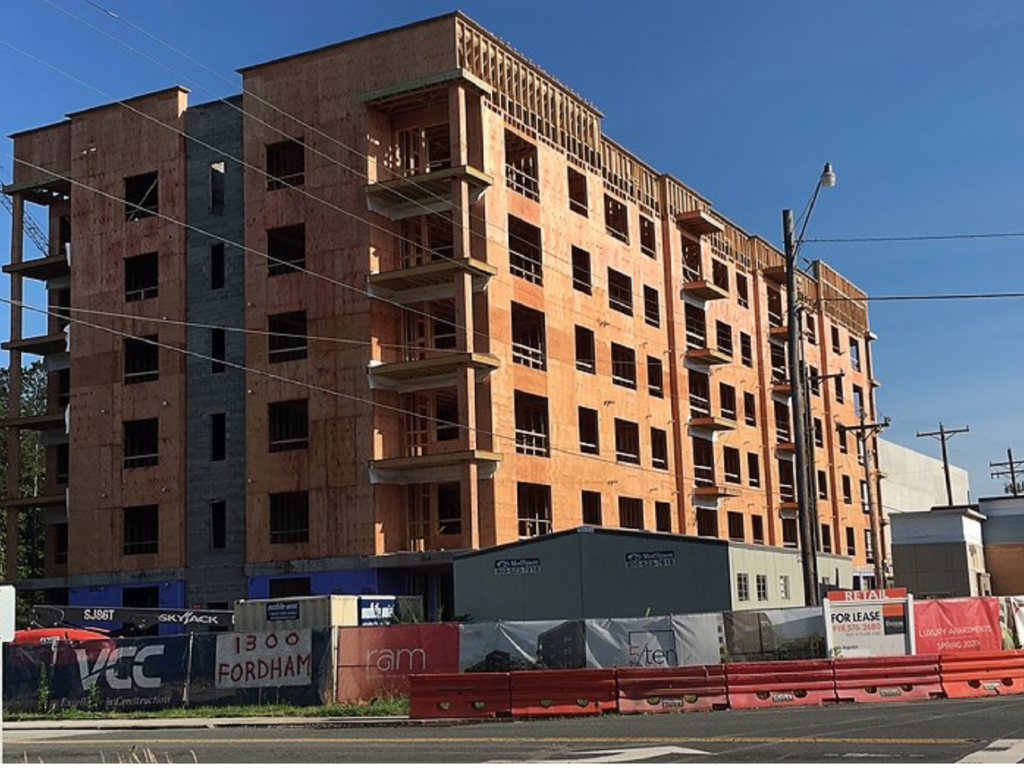 In spring of 2018, Council members Anderson, Gu and Schaevitz asked Town staff to suggest ways to improve the quality of redevelopment in the vicinity of Eastgate shopping center, an area called “Blue Hill”. Specifically, they solicited suggestions for how to reduce the scale of new buildings, promote more new commercial development, and encourage construction of housing that moderate and lower-income households can afford.
In spring of 2018, Council members Anderson, Gu and Schaevitz asked Town staff to suggest ways to improve the quality of redevelopment in the vicinity of Eastgate shopping center, an area called “Blue Hill”. Specifically, they solicited suggestions for how to reduce the scale of new buildings, promote more new commercial development, and encourage construction of housing that moderate and lower-income households can afford.
Small improvements made. In May 2018, the Council adopted Design Guidelines for the district in an effort to improve the appearance of new buildings. This effort, however, like all those which came before, did not address the issue of building height. Other modest changes to the Blue Hill building code have included placing limits on maximum block length, slightly increasing the required amount of public recreation space, and requiring that at least 10% of new construction be commercial or retail space.
What is the Town staff recommending now? In response to continued Council and public interest in improving the district’s building code, this week the staff will present ways to reduce building scale or “massing,” such as limiting building width, depth, footprint, or upper story volume. Because these recommendations do not address the key issue of building height, they do not adequately remedy what many residents consider the excessive scale of new construction in the Blue Hill district. See staff recommendations here.
Indeed, if one compares staff’s illustrations of example buildings before and after adoption of the proposed new dimensional standards, one sees little difference between the before and after illustrations. Thus, tweaking building depth, width, footprint, and upper story setback standards seem unlikely, by themselves, to deliver the kind of attractive, human scale townscape Chapel Hill residents want to see develop in the Blue Hill district. In order to adequately address the problem of excessive building scale in Blue Hill, Town staff and Town Council members need to stop beating around the bush and simply reduce the allowable building height in the district. The building heights envisioned in the Council approved Ephesus-Fordham Small Area Plan are a good target to aim for.
Bottom line on Blue Hill: Although several current Council members support addressing the problem of excessive building height in Blue Hill, we do not yet have the five votes needed to bring real change to the District.
What can you do? Sign the letter to the Council asking for smaller square footage and smaller footprint in the “Blue Hill “District. Send your permission to info@chalt.org
Brief summary of June 5 Council work session discussion
Tony Sease, the town’s consultant, explained how minor tweaks made in complicated ways would address the public and council concerns about size while we believe they do not address the major concern about massive buildings. He suggested some ways to make the buildings seem less massive instead of taking a more direct approach of limiting the size and the footprint of the buildings. A number of council members pushed back on his approach. We thought the consultant seemed most interested in what would be most financially advantageous for the developers than how to acheive the vibrant walkable district the council wants.
Council members Jess Anderson, Hongbin Gu and Rachel Schaevitz pressed for solutions that would rid us of the apartments circling parking decks, and would create public spaces where people would want to visit. These council members particularly emphasized the importance of a shared vision for the district that would bring town benefits. Nancy Oates said the tall buildings would be OK if they provided affordable housing. Michael Parker wanted to know how more commercial and office could be built. Answering Allen Buansi’s question, if the code is not changed, then Eastgate, Ram Plaza, and Staples area all could be redeveloped under the present Code, along with many smaller properties. After more than an hour of discussion it was not clear what would happen next. There were no formal votes because it was a work session.
